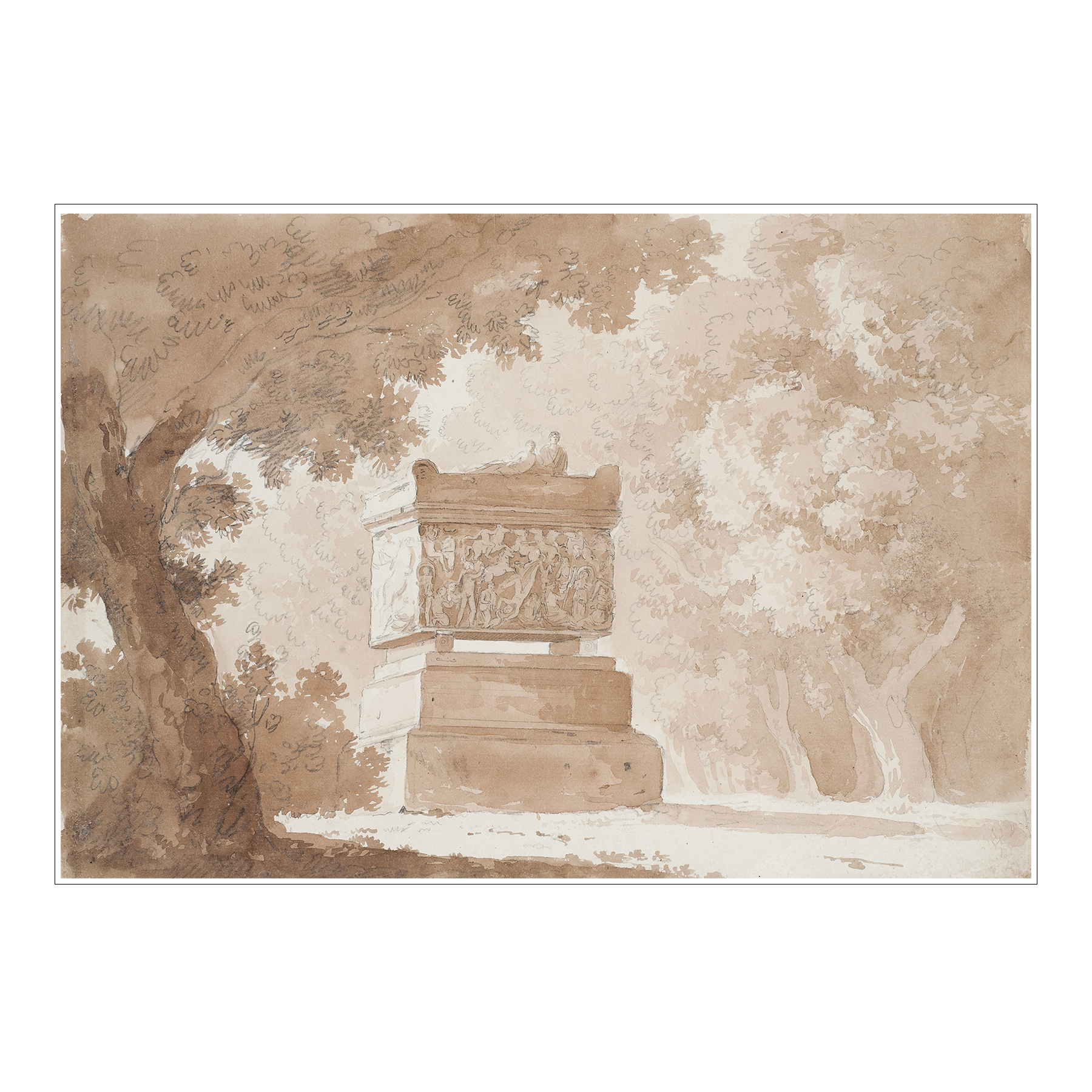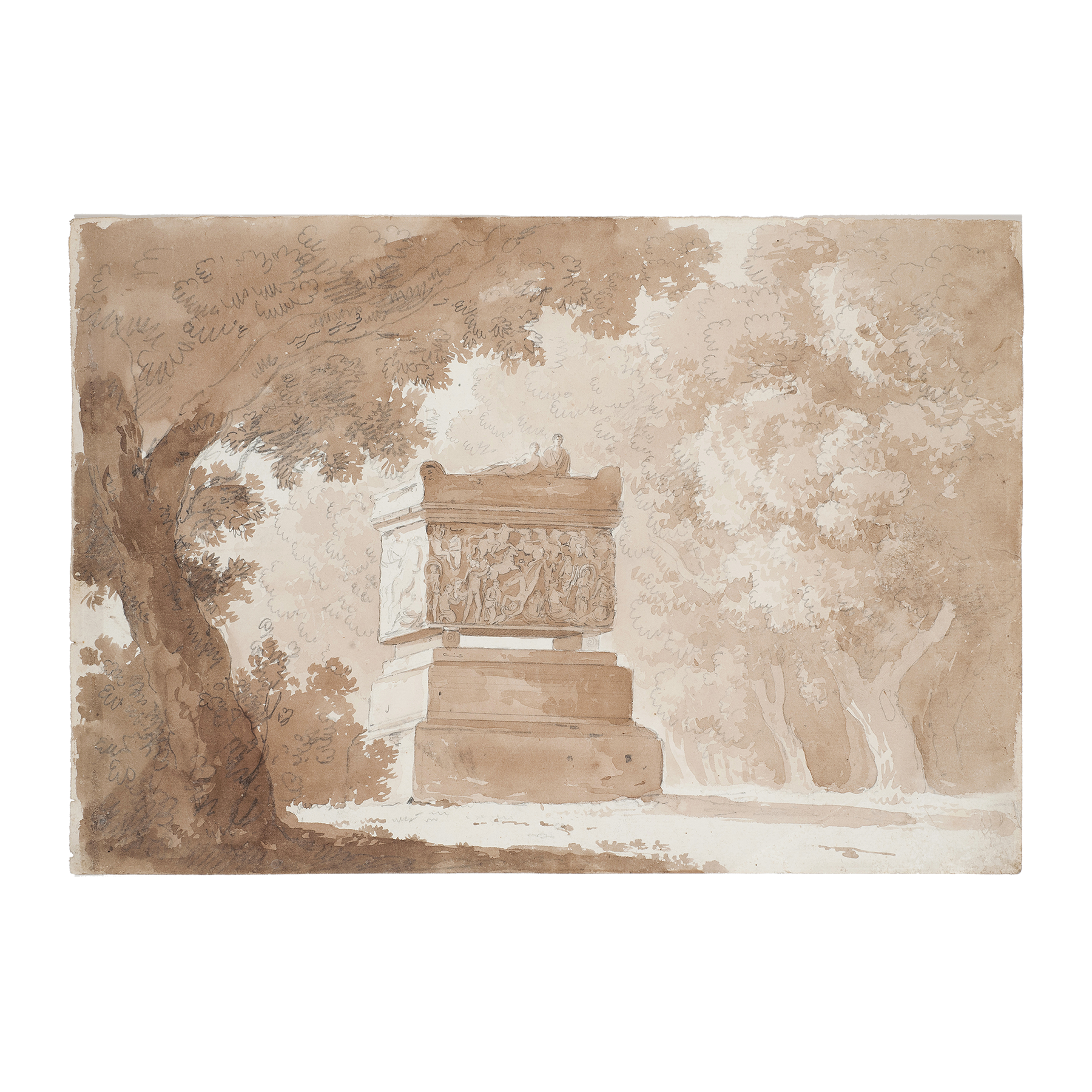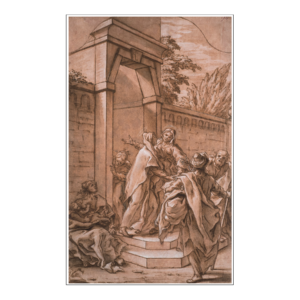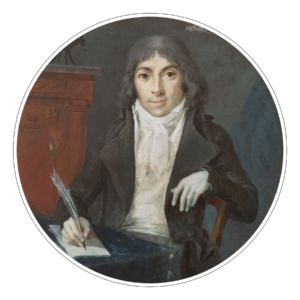Thomas Charles Naudet
Paris, 1773 – 1810
A Sarcophagus in a Forest
Pencil, brown wash. A landscape sketched with pencil on the verso.
254 x 364 mm 10 1/8 x 14 3/8 in.
Provenance – Formerly in an album of drawings containing works by Naudet, a large part of them being signed.
The son of a print seller, Naudet made his first trip to Rome when he was Hubert Robert’s pupil, as proved by inscriptions on a study of figures (Bonhams, 7 July 2004, lot 16). A lovely Portrait of a young boy, with his face shadowed under a large hat, is possibly a portrait of young Naudet by Hubert Robert (Montpellier, Musée Fabre, Inv. 870. 1. 444). At the beginning of his career, Naudet produced numerous fashion drawings, caricatures, scenes of battles or from the French Revolution; he later on specialized more in landscape or town views. In 1803, he executed the etching illustrations for Jacques Cambry’s Description du département de l’Oise.
This representation of a ‘sarcophagus of the spouses’ in an oak trees forest, very reminiscent of Jean Jacques Rousseau’s tomb in Ermenonville, demonstrates the artist’s early romanticism. Views of this famous garden, which was landscaped between 1762 and 1775 by marquis René Louis de Girardin and neglected during Consulate, were incidentally engraved by Naudet for Jacques Cambry. The sarcophagus is very similar, albeit not identical, to a Greek example nowadays in the Louvre museum (LP 2584, Ma 2119).






